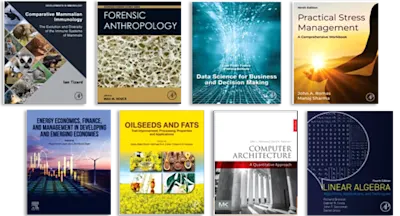
Berne & Levy Physiology
- 7th Edition - March 29, 2017
- Imprint: Elsevier
- Authors: Bruce M. Koeppen, Bruce A. Stanton
- Language: English
Berne & Levy Physiology has long been respected for its scientifically rigorous approach – one that leads to an in-depth understanding of the body’s dynamic processes. The lo… Read more
Purchase options

Berne & Levy Physiology has long been respected for its scientifically rigorous approach – one that leads to an in-depth understanding of the body’s dynamic processes. The long-awaited 7th Edition by Drs. Bruce M. Koeppen and Bruce A. Stanton, continues this tradition of excellence. With integrated coverage of biophysics and neurophysiology, key experimental observations and examples, and full-color design and artwork, this mid-size text is "just right" for a strong understanding of this complex field.
- An organ system-based approach clearly describes all of the mechanisms that control and regulate bodily function.
- Key experimental observations and examples provide a rich understanding of the body's dynamic processes.
- Student Consult access allows you to view the complete contents of the book online, anywhere you go, perform quick searches, tap into relevant bonus content from other Student Consult titles, test your understanding with USMLE-style review questions, add your own notes and bookmarks, and much more.
Section 1: Cellular Physiology
1. Principles of Cell and Membrane Function
2. Homeostasis: Volume and Composition of Body Fluid Compartments
3. Signal Transduction, Membrane Receptors, Second Messengers, and Regulation of Gene Expression
Section 2: The Nervous System
4. The Nervous System: Introduction to Cells and Systems
5. Generation and Conduction of Action Potentials
6. Synaptic Transmission
7. The Somatosensory System
8. The Special Senses
9. Organization of Motor Function
10. Higher Functions of the Nervous System
11. The Autonomic Nervous System and Its Central Control
Section 3: Muscle
12. Skeletal Muscle Physiology
13. Cardiac Muscle
14. Smooth Muscle
Section 4: The Cardiovascular System
15. Overview of Circulation
16. Elements of Cardiac Function
17. Properties of the Vasculature
18. Regulation of the Heart and Vasculature
19. Integrated Control of the Cardiovascular System
Section 5: The Respiratory System
20. Structure and Function of the Respiratory System
21. Static Lung and Chest Wall Mechanics
22. Dynamic Lung and Chest Wall Mechanics
23. Ventilation (V.), Perfusion (Q.), and V./Q. Relationships
24. Oxygen and Carbon Dioxide Transport
25. Control of Respiration
26. Nonrespiratory Functions of the Lung
Section 6: Gastrointestinal Physiology
27. Functional Anatomy and General Principles of Regulation in the Gastrointestinal Tract
28. The Cephalic, Oral, and Esophageal Phases of the Integrated Response to a Meal
29. The Gastric Phase of the Integrated Response to a Meal
30. The Small Intestinal Phase of the Integrated Response to a Meal
31. The Colonic Phase of the Integrated Response to a Meal
32. Transport and Metabolic Functions of the Liver
Section 7: The Renal System
33. Elements of Renal Function
34. Solute and Water Transport along the Nephron: Tubular Function
35. Control of Body Fluid Osmolality and Volume
36. Potassium, Calcium, and Phosphate Homeostasis
37. Role of the Kidneys in the Regulation of Acid-Base Balance
Section 8: The Endocrine and Reproductive Systems
38. Introduction to the Endocrine System
39. Hormonal Regulation of Energy Metabolism
40. Hormonal Regulation of Calcium and Phosphate Metabolism
41. The Hypothalamus and Pituitary Gland
42. The Thyroid Gland
43. The Adrenal Glands
44. The Male and Female Reproductive Systems
- Edition: 7
- Published: March 29, 2017
- Imprint: Elsevier
- Language: English
BK
Bruce M. Koeppen
BS